Axis and planes of body are imaginary concepts. In medical science, it’s important to study human anatomy and joint movement. Our body can be divided into three axis and planes, what are they? what is its significance? Let us try to answer these questions as we study axis and planes with beautiful figures.
In this article, we will discuss the types of axis and plane with a few examples. We have also compiled the whole concept of axis and plane into a video. If you would like to watch the video either then scroll down to the bottom. So let us begin.
Axis and planes of body simplified
Axis and plane describe the movement of human movement. Whatever movement we do or motion that takes place in our joint occurs in an axis and plane. For example, if I’m bending my forearm at the elbow we can define this motion at the elbow joint with an axis and plane.
So how can we define the planes and the axis of the human body.? Axis is actually an imaginary line about which movement occurs and the plane is an imaginary surface on which the movement occurs. Planes are positioned through the body at right angles and they intersect at the center of mass of the body1. And, as you can see in the figure an axis and plane always lie perpendicular to each other.
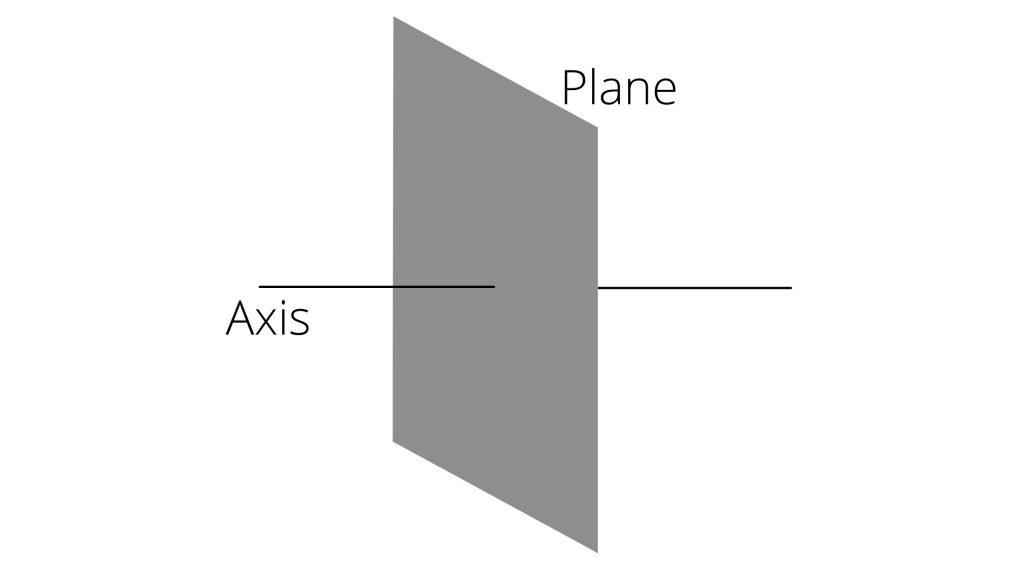
Three types of axis and plane
There are three types of axis and planes of the human body
Types of body planes
- Frontal plane
- Sagittal plane
- Horizontal plane
Types of the axis
- Frontal axis
- Sagittal axis or transverse axis
- Vertical axis
#1 Frontal body plane/Sagittal axis
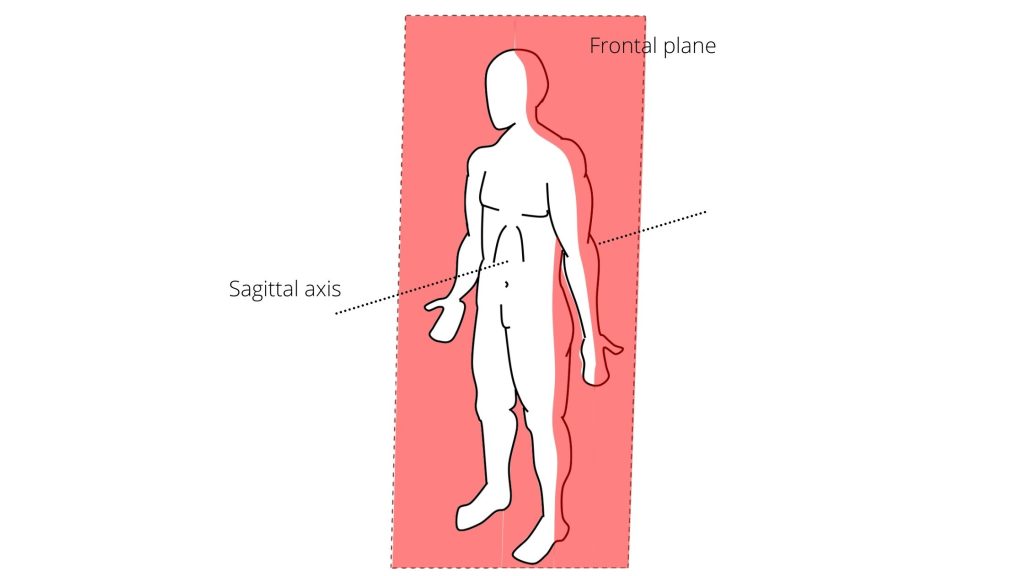
The frontal plane is perpendicular to the ground and divides the body into front and back halves, with movement occurring in the anteroposterior/sagittal axis.
Shoulder abduction and adduction are examples of movements that occur on the frontal plane, where abduction refers to moving the arms away from the body and adduction refers to moving the arms closer to the body.
Neck side bending and abduction/adduction are also examples of movements on the frontal plane, where side bending refers to tilting the head to the side and abduction/adduction refers to moving the head towards or away from the body.
#2 Sagittal plane antomy/Frontal axis
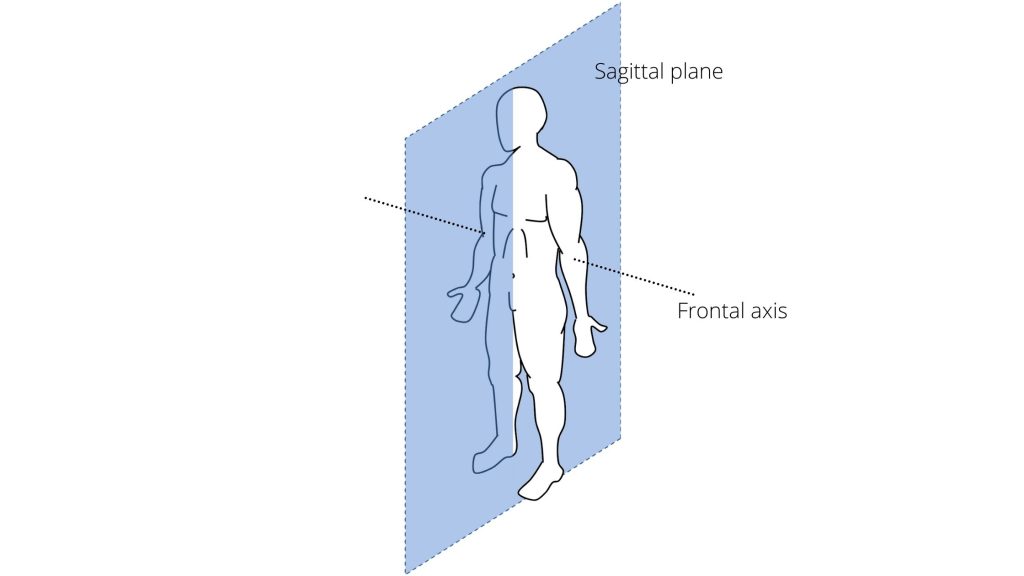
This plane is also perpendicular to the ground. The sagittal plane divides the body into left and right halves and movement in this plane occurs about a frontal axis1. Shoulder elevation, neck flexion and extension are some of the examples. Flexion and extension of the elbow joint is a very good example of movement of the forearm on the sagittal plane and a transverse axis. A parallel plane that lies away from the centre to the left or right side is termed a parasagittal plane.
An interesting fact: Our upper arm and forearm do not align in a straight line. Observe your forearm in front of a mirror by keeping your forearm facing forward. The forearm lies slightly away from the body, this is because of the formation of the carrying angle at the
#3 Horizontal plane or transverse plane/Vertical axis
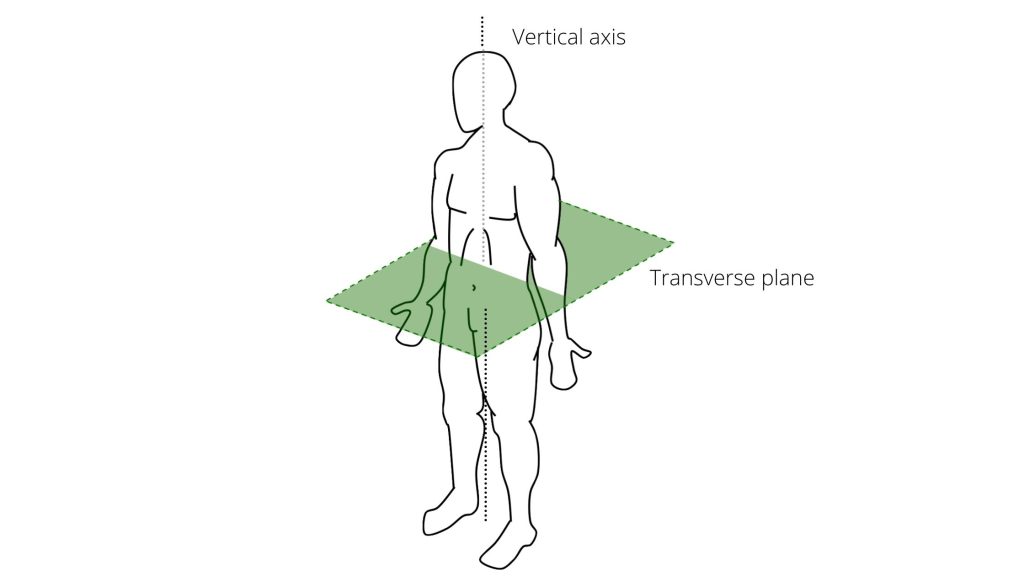
As the name suggests, the horizontal plane lies horizontal to the ground i.e parallel to the ground. Horizontal or transverse plane cross-sects the body and divides into the
The Axis of this plane is the vertical axis. Shoulder external rotation, internal rotation, rotation of the head is some of the movement at the transverse plane.
Example of human body plane and axis
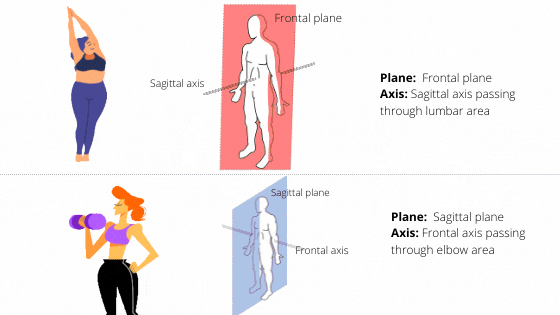
Let us end this article with an example. In the graphics below you can see two types of body movement. On the top is the person is bending her body to one side with hands held to the top. Observe that she is bending her spine at the lumbar region, so the axis of this motion passes through the lumbar area in anterior to posterior direction. So this motion is taking place on the frontal plane and sagittal axis.
Now, look at the graphics with a dumbbell. She is flexing and extending her elbow with a dumbbell held in her hand. So, the axis is passing through the elbow joint from right to left. Hence, this motion is taking place at the sagittal plane and frontal axis,
Keep Reading: Types of Synovial Joints: Anatomy & Examples
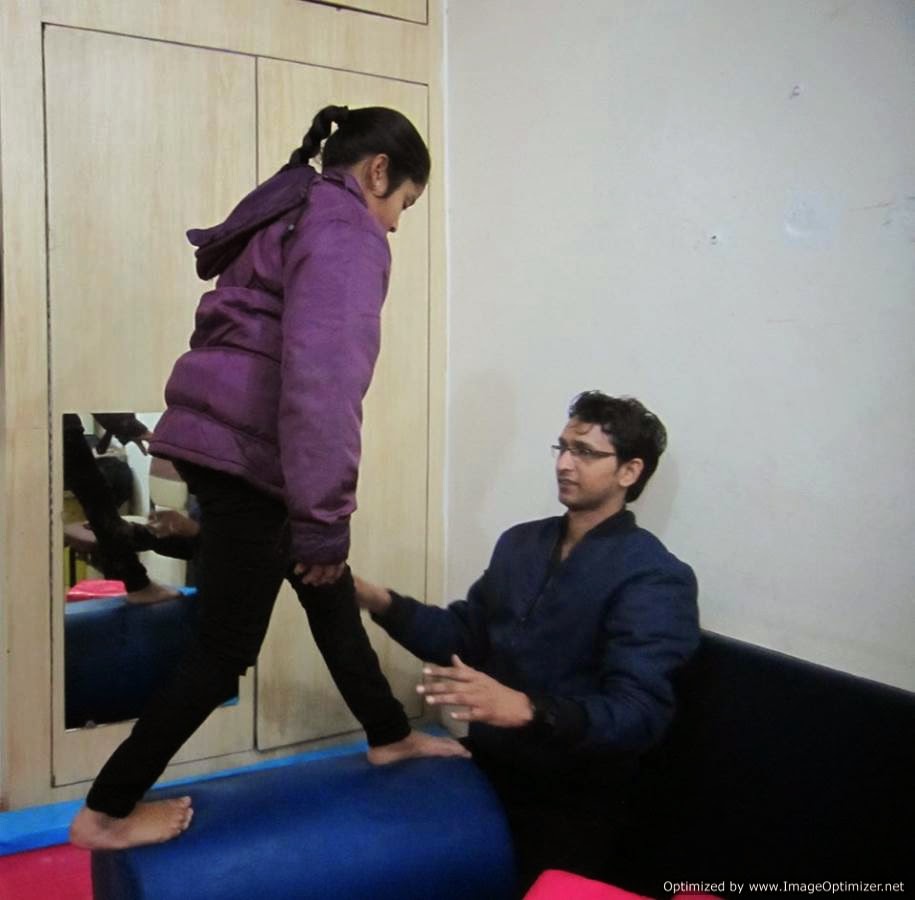





Pingback: Anatomical positions definition with diagram, examples Its terminology - Physiosunit
Best wishes @Saima
i’m future physiotherapist i’m studing first year